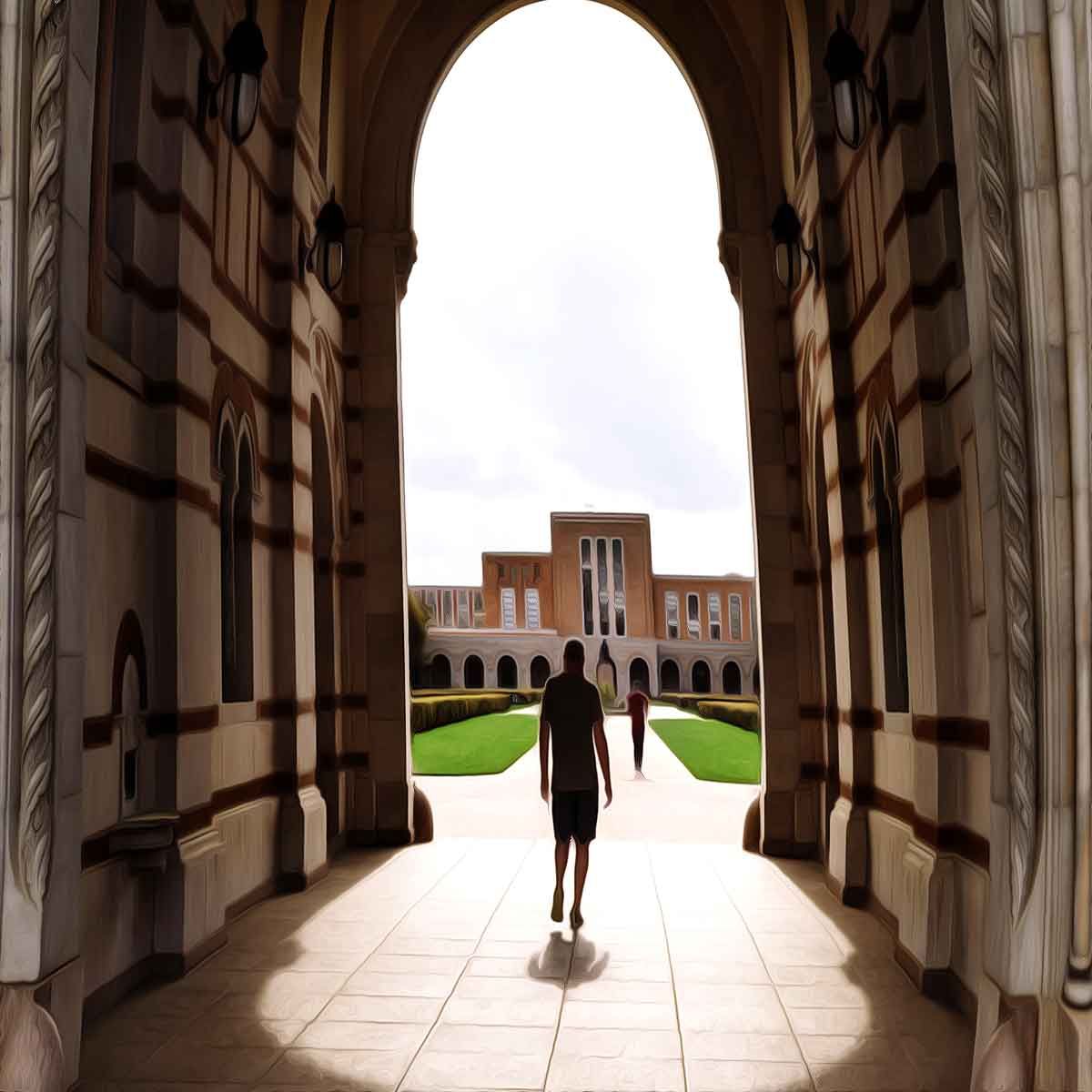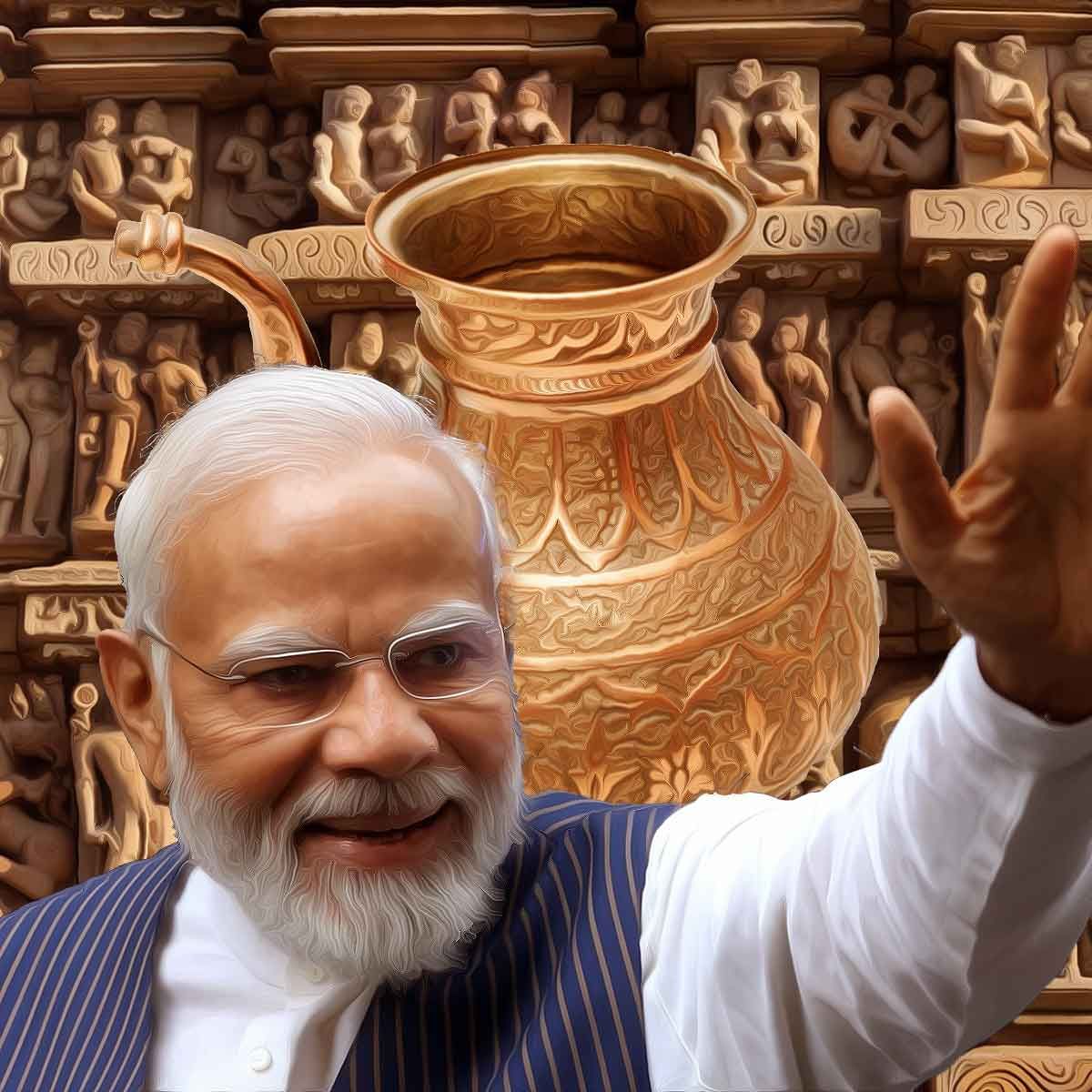MORE COVERAGE
Twitter Coverage
Satyaagrah
Written on
Satyaagrah
Written on
Satyaagrah
Written on
Satyaagrah
Written on
Satyaagrah
Written on
JOIN SATYAAGRAH SOCIAL MEDIA
"Education is learning what you didn't even know you didn't know": The Rising Phoenix: A Comparative Study of the College Shutdowns in America, the Ascendancy of Indian Education and undergoing significant change in Landscape of higher education globally

The landscape of higher education is undergoing a significant transformation globally. In the United States, a disturbing trend has emerged in recent years, with a significant rise in college closures, notably among private nonprofit institutions.
Tens of thousands of college students around the country have been impacted by these closures. From 2016 onwards, the closure and merger trends of private universities in the United States are influenced by prevalent issues such as financial challenges and enrollment fluctuations.
Data from different sources, including Higher Ed Dive, show that 91 U.S. private institutions shut down, merged with other schools, or announced closing plans between 2016 and 2023. 54% of these closures or mergers occurred between 2016 and 2019, with the remaining 46% occurring after the Covid-19 epidemic erupted in 2020. According to this timeline, the issues experienced by private institutions were not primarily due to the epidemic, but had been building for several years prior.
Financial difficulties appeared as the leading cause of closure among private universities. Approximately 68% of the 91 closures were directly related to financial concerns. These institutions were hit with dwindling revenue streams, rising operational costs, and insufficient endowments. The lack of sustainable business models made it increasingly difficult for these colleges to operate and provide a decent education to their students.
The Covid-19 pandemic increased private colleges’ financial difficulties, serving as the final straw for many struggling institutions. Despite government rescue packages totaling roughly $14 billion, these funds fell short of satisfying the critical needs of institutions. Even with financial assistance, colleges found it difficult to negotiate the pandemic’s uncertainty, resulting in closures, layoffs, and harsh cost-cutting measures.
The closure of Lincoln College in Illinois as a result of a ransomware attack, and the cost-cutting strategy implemented by The King’s College, which included staff layoffs, the closure of the student union, and the selling of office space, highlight the institutions’ vulnerability to unforeseen crises.
Another key reason contributing to college closures is the impending enrollment cliff, which will be characterized by a substantial reduction in the college-age population beginning in 2025. This demographic shift poses a significant challenge to smaller universities that rely significantly on a regular influx of students. Furthermore, changing demographics and evolving tastes among prospective students have resulted in heightened competition among colleges, with top-tier schools, such as Ivy Leagues and large state institutions, gaining more applicants and earning larger endowments.
When an institution closes, it disrupts its students’ academic journey, leaving them with unclear prospects. Only 47% of students from shuttered institutions re-enroll in secondary programs after the closure, and this re-enrollment is dominated by white women aged 18 to 24. However, the path to degree completion is laden with difficulties, since only around one-third of these re-enrolled students complete their degrees. Degree completion rates drop dramatically for those who re-enroll after a long break, with only 18% finishing their degrees after one year of re-enrollment.
When compared to prestigious Ivy League schools and significant state universities, smaller institutions confront considerable competitive obstacles. The latter institutions benefit from a better reputation, larger application pools, and larger endowments, making it difficult for smaller universities to attract students and get critical funding. Furthermore, the rise of test-optional programs in college admissions has influenced candidate preferences. Colleges that made standardized tests optional saw an increase in applicants, exacerbating the difficulties encountered by schools that still require these tests.
The surge in college closures in the United States warrants a more in-depth investigation of the variables that contribute to these closures. Recognizing these dynamics is critical for policymakers and educators as they work toaddress the consequences of college closures and support affected students and institutions. Allowing colleges and students the time to manage these obstacles is critical for mitigating the negative consequences of closures and facilitating effective transitions within the higher education environment.
While the American higher education system grapples with these challenges, it is worth noting the contrasting scenario unfolding in India. The Indian education system, particularly in the fields of science and technology, has been witnessing a significant upswing. The country
has been making substantial strides in improving its educational infrastructure, curriculum, and research capabilities. The Indian Institutes of Technology (IITs), Indian Institutes of Management (IIMs), and other premier institutions have been consistently ranked among the top universities globally, attracting students from all over the world.
Key statistics about the opening of new IITs, IIMs, and other important education institutes in India:
As of 2023, there are 23 IITs across the country. Since 2014, on average, a new IIT has been opened every year. One of these is also open in Dharwad, Karnataka 12.
Similarly, the number of IIMs has also increased. Since 2014, in 6 years, 7 IIMs were built or are under development 3.
The number of universities in India has grown significantly. As of 2022, there are 1,100 universities in India, up from around 800 in 2014 4.
According to a survey, 5,298 colleges have been built in the last nine years 5.
The female enrolment in B.Tech Programmes in IITs during the years 2018, 2019 & 2020 was increased to 15.29% 6.
The Indian government's focus on 'Make in India' and 'Digital India' initiatives has led to a surge in technological advancements and digital literacy. The country's successful Mars mission, 'Mangalyaan', and the launch of a record 104 satellites in a single mission by the Indian Space Research Organisation (ISRO) have put India on the map as a major space-faring nation. These achievements are a testament to the transformative leadership of PM Modi and his vision of a 'New India'.
|
The value of Indian education is further underscored by the fact that several Indians, educated in India, are now heading some of the world's top companies as CEOs. These include Sundar Pichai of Google, Satya Nadella of Microsoft, Shantanu Narayen of Adobe, Arvind Krishna of IBM, and Parag Agrawal of Twitter, to name a few. Their success stories are a testament to the quality of Indian education and its ability to produce world-class leaders.
However, the rise of India as a global educational powerhouse is not without its challenges. The country still grapples with issues such as access to quality education for all, improving the standard of education in government schools, and bridging the urban-rural divide in educational infrastructure. Despite these challenges, the country's commitment to improving its educational landscape is unwavering.
In conclusion, while the trend of college shutdowns in America is alarming, it presents an opportunity for introspection and reform. On the other hand, the rise of India as a global educational powerhouse offers valuable lessons on resilience, innovation, and the power of a vision-driven approach. As the world becomes increasingly interconnected, the exchange of ideas and best practices between countries can pave the way for a more inclusive and robust global education system.
References:
The alarming trend of college shutdowns in America - News Intervention. Link
Indian CEOs in the US: The success story continues - The Economic Times. Link
India's Mars Mission: Mangalyaan completes 5 years - India Today. Link
ISRO sets world record, launches 104 satellites in one go - The Times of India. Link
FactChecking PM Modi's Claims On Setting Up New IITs, IIMs, AIIMS ↩1
Indian Institutes of Technology - Wikipedia ↩2
How many IIMs and IITs were built after Modi came to power? - Quora ↩3
Between 2014-22, New IIT, IIM Were Established Each Year': PM Modi At Rozgar Mela ↩4
Significant increase in number of universities/IITs/IIMs in last 9 years: MoE↩5
Indian Institutes of Technology (IITs) - Ministry of Education↩6
 Support Us
Support Us
Satyagraha was born from the heart of our land, with an undying aim to unveil the true essence of Bharat. It seeks to illuminate the hidden tales of our valiant freedom fighters and the rich chronicles that haven't yet sung their complete melody in the mainstream.
While platforms like NDTV and 'The Wire' effortlessly garner funds under the banner of safeguarding democracy, we at Satyagraha walk a different path. Our strength and resonance come from you. In this journey to weave a stronger Bharat, every little contribution amplifies our voice. Let's come together, contribute as you can, and champion the true spirit of our nation.
 |  |  |
| ICICI Bank of Satyaagrah | Razorpay Bank of Satyaagrah | PayPal Bank of Satyaagrah - For International Payments |
If all above doesn't work, then try the LINK below:
Please share the article on other platforms
DISCLAIMER: The author is solely responsible for the views expressed in this article. The author carries the responsibility for citing and/or licensing of images utilized within the text. The website also frequently uses non-commercial images for representational purposes only in line with the article. We are not responsible for the authenticity of such images. If some images have a copyright issue, we request the person/entity to contact us at This email address is being protected from spambots. You need JavaScript enabled to view it. and we will take the necessary actions to resolve the issue.
Related Articles
- "Harvard latest course: How to lose billionaires 101": As the Harvard university's stance on a pro-Hamas letter sparks debate, luminaries like Idan Ofer and Wexner Foundation cut all the ties, Harvard's once-untouchable prestige now faces serious scrutiny
- Santi Ghosh and Suniti Choudhury: Two Teenage Freedom Fighters Assassinated British Magistrate
- 25-Year-Old Kamakshi Enters ‘World Book of Records’ For Raising Awareness On Cybercrimes & Training 50,000 Policemen
- USA gun violence claims the life of Indian doctoral student Aaditya Adlakha in Cincinnati, mirroring the tragic fates of Jude Chacko, Saiesh Veera, and Devsish Nandepu - all lost on foreign soil, far from their motherland's embrace, their dreams shattered
- Legend of Maharishi Charaka also known as The father of Ayurveda: Earliest school of medicine known to mankind is Ayurveda
- The Calculated Destruction of Indian Gurukuls (Education System) by British Raj which resulted in the tormented Indian Spirit
- The Balliol college at the University of Oxford has dedicated a new building after Dr. Lakshman Sarup, the first candidate at Oxford to pass his thesis for a Doctorate of Philosophy (DPhil) degree on Sanskrit treatise on etymology
- 'Resign In Disgrace and Retire with Remorse': Presidents of Harvard, UPenn, and MIT face public condemnation, accused of shamefully overlooking 'calls for genocide of Jews' on campuses. A storm of controversy brews, demanding accountability and change
- Gandhi emphasized that he won't salute Indian National Flag if Charkha is replaced by Ashoka Chakra and wanted British flag added to it
- Prophecies of Jogendra Nath Mandal getting real after seventy years of his return from Pakistan
- Unsung Heroine Pritilata Waddedar, Who Shook The British Raj at the age of 21
- Can Communism and Democracy Coexist - 100 Years of Russian Revolution
- Hindus need temples today more than ever and here is why
- Hindus documented massacres for 1000s of years: Incomplete but indicative History of Attacks on India from 636 AD
- Another Indian student, doctoral candidate Sameer Kamath, found dead in Indiana - the sixth in a string of tragedies, two from Purdue, hinting at a deeper, somber story alongside Neel Acharya, Varun Chheda, Akul Dhawan, Jaahnavi Kandula, and Vivek Saini

























